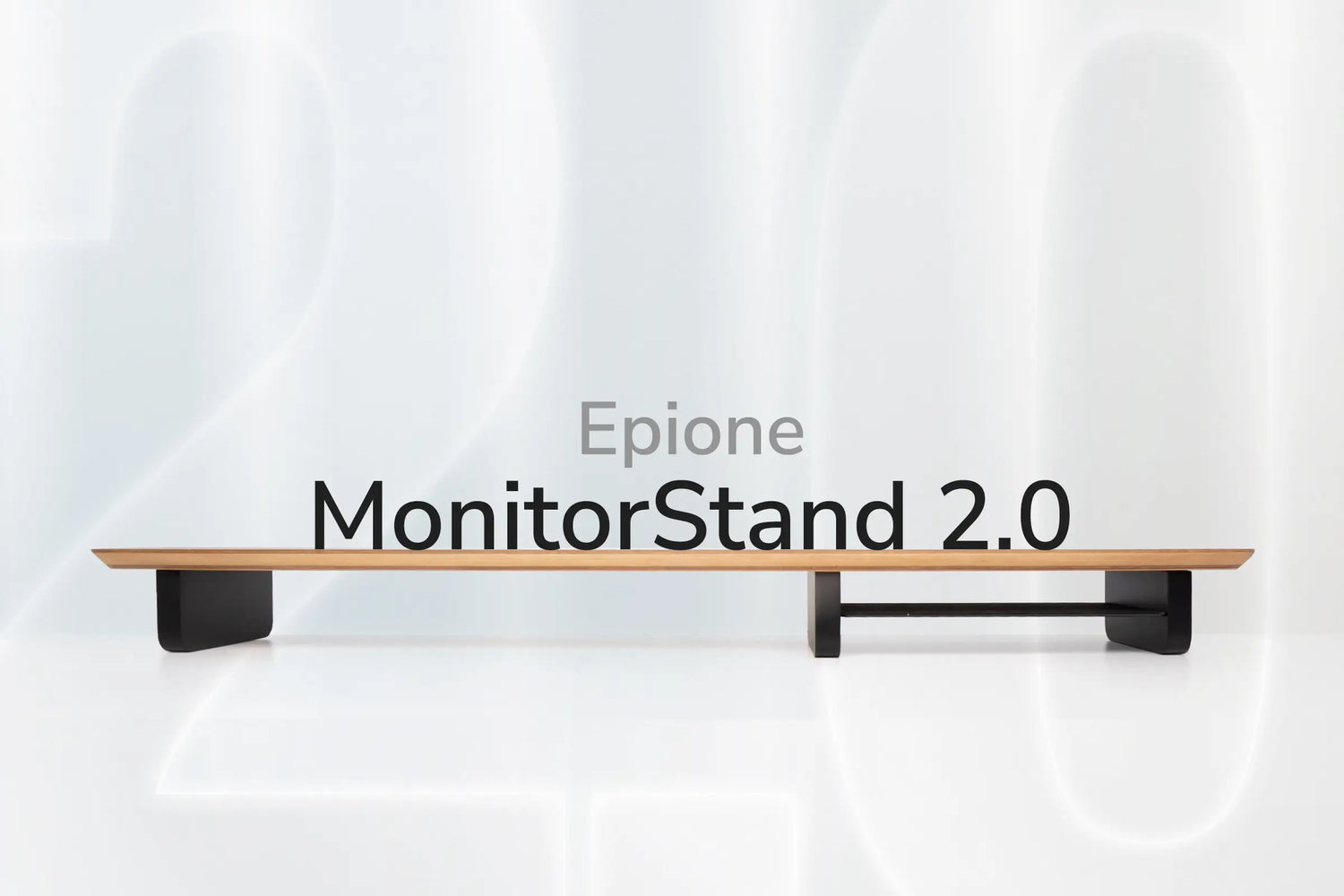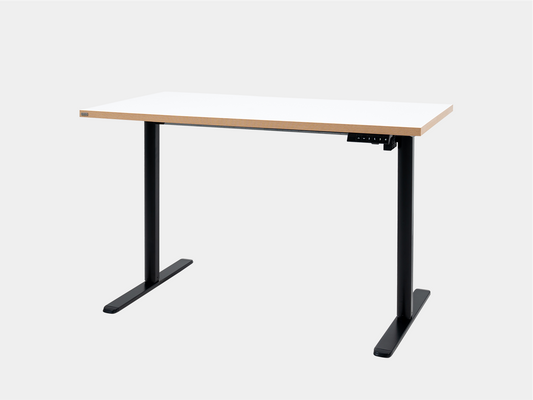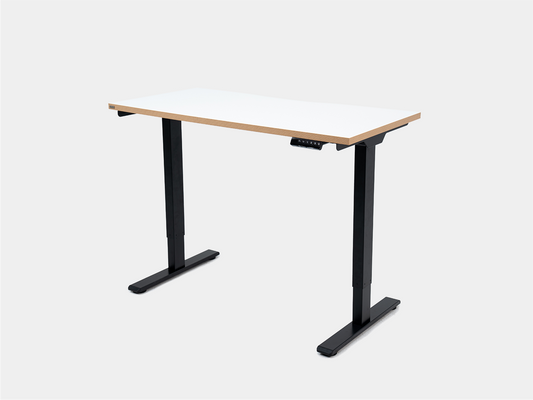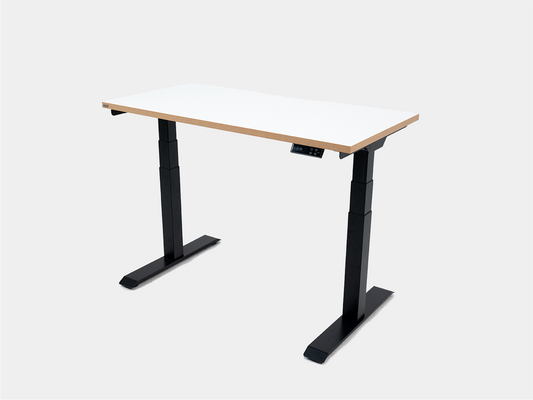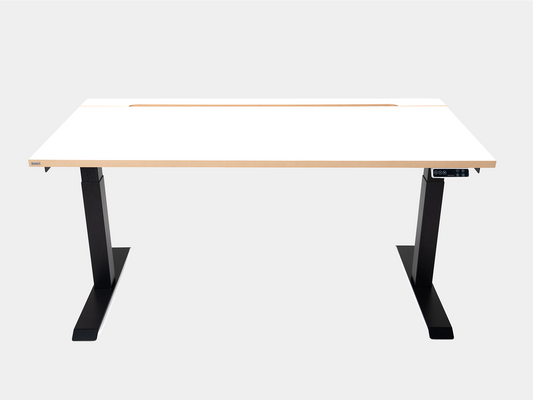What does an ergonomic office look like? Why is ergonomics important for today's office? What factors should be considered when implementing office ergonomics? Let's find out the answer with Epione in this article!

What will office ergonomics look like?
Ergonomics is the science concerned with understanding the interactions between humans and other elements of a system, and the profession of applying theory, principles, data, and methods to design to optimize human health and overall system performance. The word ergonomics comes from the Greek words “ergon” – work and “nomos” – law. Together they mean “law of work” or “science of work”.
Similarly, office ergonomics refers to the science of designing the workplace to accommodate the abilities and limitations of workers in a way that optimizes individual health, comfort, and productivity. It involves creating a workspace that promotes proper posture, reduces the risk of musculoskeletal disorders, and minimizes physical stress caused by prolonged sitting.
Why is office ergonomics important?
1. Risks that can be encountered when not applying ergonomics
According to the Washington State Office of Ergonomics, the largest type of office injury claim is Work-Related Musculoskeletal Disorders (WMSD's). WMSD's account for more than 40% of workers' compensation claims for office workers. These injuries are costing State employers more than $12 million per year in medical expenses and lost time, and are responsible for more than 70,000 lost workdays per year.
Failure to apply ergonomics or incorrect application can lead to common conditions such as:
- Repetitive stress injuries: These include pain in the muscles, nerves, and tendons caused by repetitive motion in an awkward sitting position. Most cases of repetitive stress injuries originate in the nerves in the upper body, from the nerves in the neck and shoulders down to the wrists and hands. A common example is wrist and hand pain from typing.
-
Back and neck pain: This is the “enemy” of most office workers today. Inappropriate headrests and backrests can lead to back and neck pain. In the long run, the pain can develop into disc herniation or spinal degeneration. Therefore, using a desk and chair that fits your body size is crucial to protect your health.
Back and neck pain due to sitting in an inappropriate chair

- Digestive problems: Although this may sound unlikely, sitting in an unhealthy position can affect digestion in some cases. For example, a slouched posture can compress the organs in the abdomen, including the digestive tract. This in turn affects the body's metabolism.
- Computer Vision Syndrome: Computer vision syndrome refers to a group of vision-related problems caused by prolonged computer use, including: Eye irritation (dry eyes, itchy eyes, red eyes), blurred vision, headaches, back pain, neck pain, muscle pain, fatigue, etc. that occur when working in an unsuitable environment, such as an inappropriate distance from the eyes to the screen.
- Carpal Tunnel Syndrome: One of the most common musculoskeletal disorders, carpal tunnel syndrome typically causes pain, numbness, and tingling in the hand and arm. The pain occurs when one of the main nerves in the hand, the median nerve, is compressed as it travels through the wrist. The main cause is often improper mouse and keyboard placement.
2. Benefits received when applying office ergonomics
In addition to the obvious benefits of improving workers' health, office ergonomics also offers the following advantages:
- Increased productivity: Good ergonomic solutions allow employees to focus on their tasks and not be distracted by the discomfort of an uncomfortable sitting position. On the contrary, if equipped with the right ergonomics, employees will feel comfortable, both mentally and physically, thereby boosting productivity, creativity and increasing work efficiency.
- Cutting operating costs: Can investing in ergonomic office furniture save your company money in the long run? Office ergonomics can help reduce your company’s insurance costs by reducing the risk of employees suffering work-related injuries and illnesses through work injury compensation. For example, the total cost of workplace injuries and illnesses in the UK is £ 18.8 billion , with around 40% of the cost being due to workplace injuries.
-
Improved Employee Satisfaction: Repetitive stress injuries and other issues are common in offices that do not focus on ergonomics and health. By implementing ergonomic office furniture, your company can help foster a culture of wellness and demonstrate that you care about the health and safety of your employees. This increases employee satisfaction and is a plus when recruiting future talent!
Improve employee satisfaction.

- Creating a healthy culture: Using ergonomics demonstrates your company’s commitment to employee safety and health as a core value of your company culture. Healthy employees are an organization’s most valuable asset. Therefore, creating and promoting a culture of safety and health in your company will have a positive and beneficial impact on the entire system.
Ergonomic Office Setup Ideas
1. Use ergonomic furniture and equipment
An ergonomic office will inspire individuals to work with enthusiasm, creativity, perform better and feel happier. Equipment is an important component that directly impacts the employee's work experience, and can include:
- Adjustable desks: Desks with adjustable heights are said to increase productivity and are good for physical health. When choosing, you should also consider factors such as material, length, width, load capacity, etc. to ensure that they meet the needs of each department.
-
Ergonomic chairs: Office workers often sit for 7, 8 hours, even up to 12 hours a day. Spending most of the time sitting will cause many health problems as mentioned above. Therefore, equipping employees with ergonomic chairs with all the necessary features is extremely important. A good ergonomic chair helps keep the body in the correct posture, avoiding negative effects on health.
Office workers sitting in ergonomic chairs

- Flexible pivoting display: Can your employees read the screen clearly without bending their heads, necks, or torsos forward or backward? These actions can be distracting, uncomfortable, and have negative health effects. For more flexibility, your company may consider using a monitor arm that allows for flexible pivoting to accommodate different tasks.
- Ergonomic keyboard and mouse: According to the National Institutes of Health, people who use computers a lot are at higher risk for medical problems like carpal tunnel syndrome, partly because of the way their hands move across their desks. Using an ergonomic keyboard and mouse is the best way to keep your wrists straight and stress-free.
2. Consider environmental factors
Light, temperature, sound, and greenery are environmental factors that affect us greatly but do not receive the proper attention. Your company can consider the following solutions as ideas for setting up an ergonomic environment:
- Lighting: The office should be well-lit with large windows, but not so bright that it causes glare or dims employees’ computer screens. Plus, natural light is said to significantly improve mood and concentration!
- Sound: Try your best to reduce ambient noise, such as choosing soundproof office doors, because not everyone can concentrate in a noisy space. On the contrary, instrumental music, white noise, and natural sounds can help you concentrate and work effectively.
- Temperature: Some studies suggest that warmer environments are better for creative thinking, while cooler temperatures are better for tasks that require alertness. It’s hard to give a one-size-fits-all temperature, but David Shipworth, a researcher at the UCL Energy Institute, suggests it could be somewhere between 22 and 24°C .
-
Green plants: Plants not only bring fresh air to the office but also help improve our mood. Choosing plants that require little care and do not need direct sunlight such as cacti, succulents, aloe vera, etc. will be easy to nurture without taking much time.
Decorate your office with more plants

3. Guide to office ergonomics
Although the ergonomic design of office furniture products has optimized the parameters and flexibility for a standard sitting posture, it is still not enough. Just like when you buy an item without knowing how to use it, you cannot fully utilize the power of that item. Understanding the standard posture will help users fully exploit the potential of ergonomic products.
Your company should conduct internal training sessions to educate employees on how to use ergonomic furniture, smart office support devices, and understand ergonomic sitting postures.
4. Develop a culture of rest
No matter how optimized your workspace is, individuals need time to recharge. Breaks don’t have to be elaborate; they can be as simple as standing up and walking around your desk a few times. Short, frequent breaks to move around during a study session are more beneficial than long, infrequent breaks. Researchers recommend taking 10 to 15 minutes for every 60 minutes of work. Companies can implement free breaks or encourage people to do light stretching for 5 to 10 minutes.
Nowadays, some offices have successfully implemented ergonomic applications. However, it is still not widely known or understood. Hopefully, through this article, Epione has brought you useful knowledge and is part of a good start for the upcoming journey of setting up an ergonomic office!
